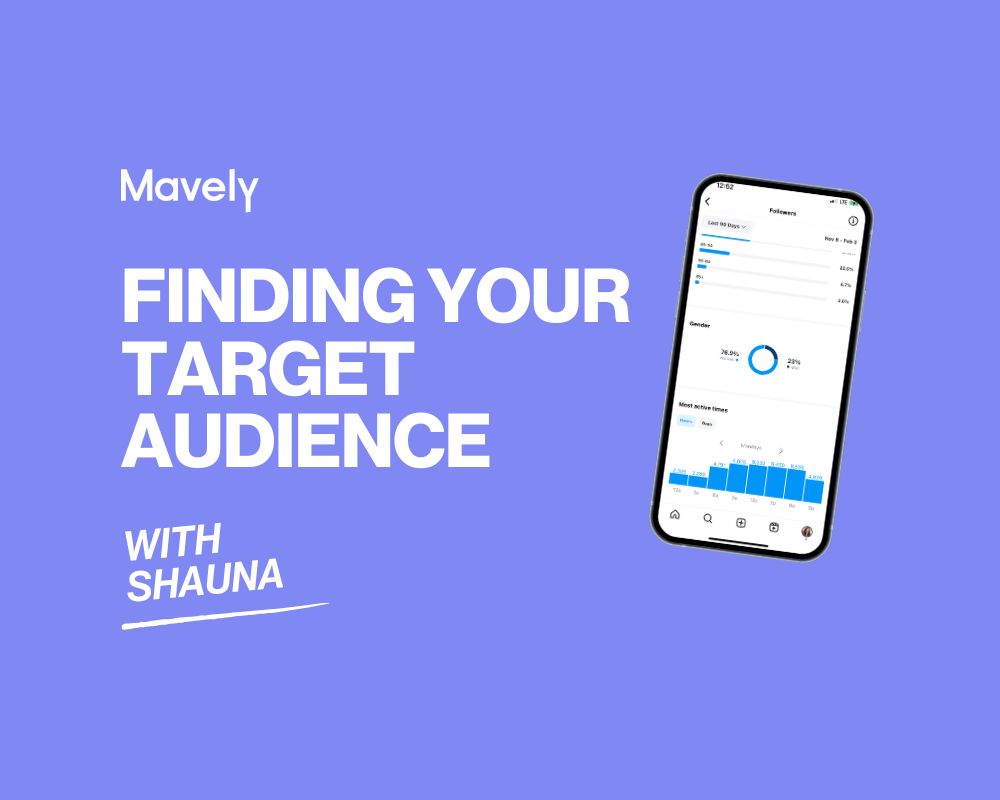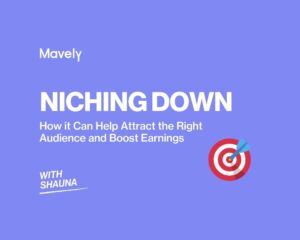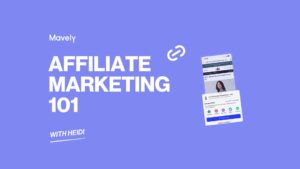In order to drive sales and make money as an influencer, one of the first things you need to understand is who your target audience is.
In this blog and video, you’ll learn:
-
Why target audiences matter
-
The importance of keywords in search engine optimization (SEO)
-
How to attract your ideal target audience
Oftentimes, influencers and content creators are focused on likes and growing their following through virality. But when you’re trying to earn commission, you want to focus less on vanity metrics and more on link clicks and sales. Let’s learn how to attract engaged audiences that are ready to buy.
What is a target audience, and why does it matter?
Your target audience is a specific group of people most likely to be interested in your content.
Your target audience can be characterized by common:
-
Demographics
-
Interests
-
Behaviors
For influencers and affiliate marketers, your target audience is a segment of your community who engage most with your posts and are most likely to act on your affiliate links – that is, they are the people who will buy what you’re selling.
You can’t focus on everyone when you are trying to grow your following, because not everyone is going to be interested in your content or the products and brands that you’re promoting.
To start thinking about your target audience, ask yourself: Who is going to be interested in the topics that I talk about and the products that I promote?
What happens if I don’t attract the right audience as an influencer?
If you don’t attract the right audience, there are several negative outcomes that can occur:
-
Your engagement rate suffers.
-
Your content achieves less visibility.
-
Without engagement, it becomes harder to grow your audience.
-
It becomes harder to gauge what your audience wants to see from you when there’s no interaction.
If this happens to you, you can start feeling like you’re wasting your time when you’re posting every day without seeing engagement or sales. You can avoid these negative outcomes by focusing your efforts on attracting the right people who are going to take action, click links, and make purchases.
What happens when I do attract my target audience?
On the flip side, when you are attracting the right audience it can lead to many positive outcomes:
-
Increased link clicks and sales
-
Boosted visibility on your social content
-
Higher engagement on your posts
-
Great feedback from your audience
If you have 5,000 followers and you have high engagement, that’s better than having 30,000 followers who aren’t viewing your content, clicking your links, or purchasing products that you promote.
It’s not about the follower count, it’s about attracting the right audience.
Understanding your existing audience
As you begin sharing affiliate links, your focus should be on attracting a targeted audience and driving conversions: getting link clicks and driving sales. To drive conversions, you need to understand your existing audience.
You can find information about your audience on every social media platform. While each platform is different, you can usually find analytics or demographic insights about your audience in every application, such as:
-
Age range
-
Gender
-
Location
-
Times of day for increased activity
The importance of knowing your audience
Understanding demographic information about your audience is really helpful. Let’s look at an example where you are promoting products from the brand Justice, which is geared toward tween girls.
If you learn that you have an older audience, the products you share from Justice may not resonate with this audience if they are shopping for clothes for themselves. But if your older audience members are parents of tween girls and are buying clothes for their daughters, then your content may still be something they are interested in. In this case, it would be important for you to know both the age range of your audience, as well as whether they are parents.
You want to understand who is currently in your audience and ask yourself: Am I promoting brands and products that resonate?
Learn about your audience’s buying behaviors
If you are an influencer on the Mavely platform, you can analyze your audience’s buying behavior within your dashboard. Information in your Mavely application can help answer questions such as:
-
Which brands are your audiences shopping the most?
-
Are they high-end luxury brands or are they more affordable brands?
-
Is your audience very motivated by sales and deals?
-
What are the kinds of products your audiences buy the most?
Additionally, you can see traffic sources for people clicking your links and buying the products you share. Are they buying primarily on Facebook? Are you getting a lot of traffic from Instagram or TikTok?
As you dig into your audience insights, is it the audience that you expected to have? If not, let’s explore how to attract the audience that you really want.
Attract your target audience through SEO
Search engine optimization (SEO) can help you attract your target audiences by using keywords in your posts and social profiles.
SEO is the art of enhancing your content to rank higher and boost visibility in search results, and it’s important on every social media platform. It helps the algorithm categorize your content so it’s shown to the right audience.
Find keywords to increase organic traffic
Every social media platform has a search bar, including Facebook, Instagram, TikTok, YouTube, and Pinterest. You can use these search functions to find keywords and keyword phrases.
As you type your search into a social platform or a search engine like Google, the search function will recommend keywords that people are commonly looking for. These suggested keywords can help you understand what people are searching for surrounding your niche, which can help you when it comes to creating content.
You should use keywords related to your niche throughout your content and within your social media profiles. When you use keywords that people in your target audience are searching for, you will organically attract people who may not know about you yet.
When you’re optimizing your content to attract your target audience:
-
Define your target audience: Who do you want to attract to engage with your content? What kinds of people would be interested in your niche and the products you promote?
-
Learn who is already in your audience: Dig into your analytics. Who is already following you, and what types of content do they engage with that you share? Are they the right audience fit?
-
Find related keywords to use: Use search functions within social platforms and on search engines to find common terms related to your niche. Then start using them within your content and profile bio.
Share content that resonates with your target audience
Now that you understand your target audience, make sure you’re speaking to their wants and needs so that they continue to engage with your content and to buy the products that you share.
Find insights within your social feed. Look through the comments on your social posts:
-
What are people asking you about?
-
What are they saying that they’re struggling with?
-
Is there an opportunity for you to create content that would help them in those areas?
Analyze your Mavely analytics, and ask yourself:
-
What are the top-performing brands and what do those brands have in common?
-
What does it say about your audience and their buying behaviors?
If you don’t have a lot of engagement on your posts, try searching for related keywords in any social media platform. See what content is trending for those keywords. What’s showing up in the search results? What comments are people leaving on this trending content?
These insights can give you an idea of what questions your audience might have, so you can better anticipate and speak to the topics they’re most interested in.





